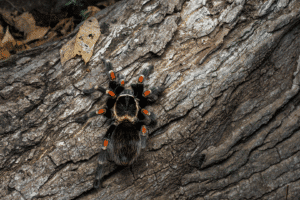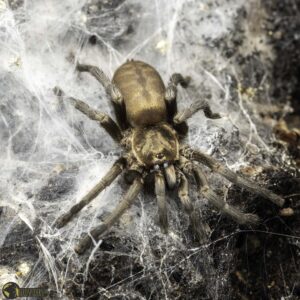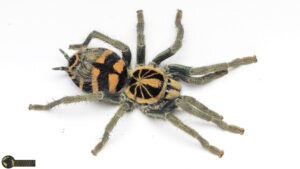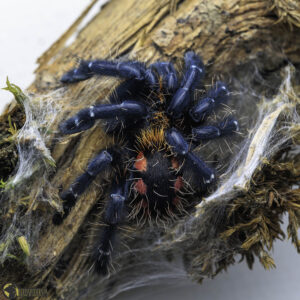Overview
Discover the fascinating Typhochlaena costae, a unique species of tarantula native to the Tocantins state in Brazil. Known for its vibrant colors and intriguing trapdoor lifestyle, this tarantula captivates arachnid enthusiasts and nature lovers alike. As a captive-bred species, Typhochlaena costae highlights the importance of conservation efforts to protect its natural habitat and ensure its survival in the wild. This article explores the natural history, taxonomy, and husbandry of this remarkable spider, inviting you to learn more about its world and why it deserves protection.
Natural History of Typhochlaena costae
Typhochlaena costae is an arboreal tarantula, meaning it lives primarily in trees. What makes it especially fascinating is its trapdoor lifestyle, a rare behavior among tarantulas. This species constructs trapdoor-like retreats in its arboreal environment, which it uses for hunting and protection. The tarantula’s natural habitat is the tropical forests around Palmas, Tocantins, Brazil, where it plays a vital role in the ecosystem by controlling insect populations.
Both male and female Typhochlaena costae have distinctive physical features. Their abdomens are black with three striking red spots on the sides, while their chelicerae and the front edge of the cephalothorax are covered with long, stiff setae (hair-like structures). These adaptations help them thrive in their arboreal niche.
Taxonomy & Systematics of Typhochlaena costae
Typhochlaena costae belongs to the family Theraphosidae, subfamily Aviculariinae, which includes many arboreal tarantulas. It was first described scientifically by Rogério Bertani in 2012. The species name honors Miriam Costa, who collected the holotype specimen and contributed significantly to spider research at Instituto Butantan.
- Kingdom: Animalia
- Phylum: Arthropoda
- Class: Arachnida
- Order: Araneae
- Family: Theraphosidae
- Genus: Typhochlaena
- Species: T. costae
Male Typhochlaena costae have a thinner and shorter embolus compared to other species in the genus, while females possess long, non-spiraled spermathecae that diverge at the base. These unique anatomical traits help distinguish this species from its relatives.
Husbandry of Typhochlaena costae
For tarantula keepers interested in Typhochlaena costae, understanding its natural arboreal and trapdoor behaviors is essential for proper care. Providing a tall enclosure with plenty of vertical space and hiding spots mimicking tree bark or branches is ideal. Maintaining a temperature range of about 24–28°C (75–82°F) and moderate humidity will help replicate its native tropical environment.
Since this species is rare and unique, captive breeding programs are encouraged to reduce wild collection and support conservation. Enthusiasts should always source Typhochlaena costae from reputable breeders to help protect wild populations and promote sustainable pet keeping.
References
- Bertani, R. (2012). Revision, cladistic analysis and biogeography of Typhochlaena C.L. Koch, 1850, Pachistopelma Pocock, 1901 and Iridopelma Pocock, 1901 (Araneae, Theraphosidae, Aviculariinae). ZooKeys, 230, 1–94. doi:10.3897/zookeys.230.3500
- Andre C. & Hüsser M. (2018). About trapdoors and bridges – New insights in the little-known ecology and lifestyle of the genus Typhochlaena C.L. Koch, 1850. British Tarantula Society Journal, 32(3), 3-29.
- World Spider Catalog. (n.d.). Taxon details Typhochlaena costae Bertani, 2012. Natural History Museum Bern. Retrieved from http://www.wsc.nmbe.ch/species/37976
- Tarantupedia. (n.d.). Typhochlaena costae. Retrieved from http://www.tarantupedia.com/aviculariinae/typhochlaena/typhochlaena-costae






